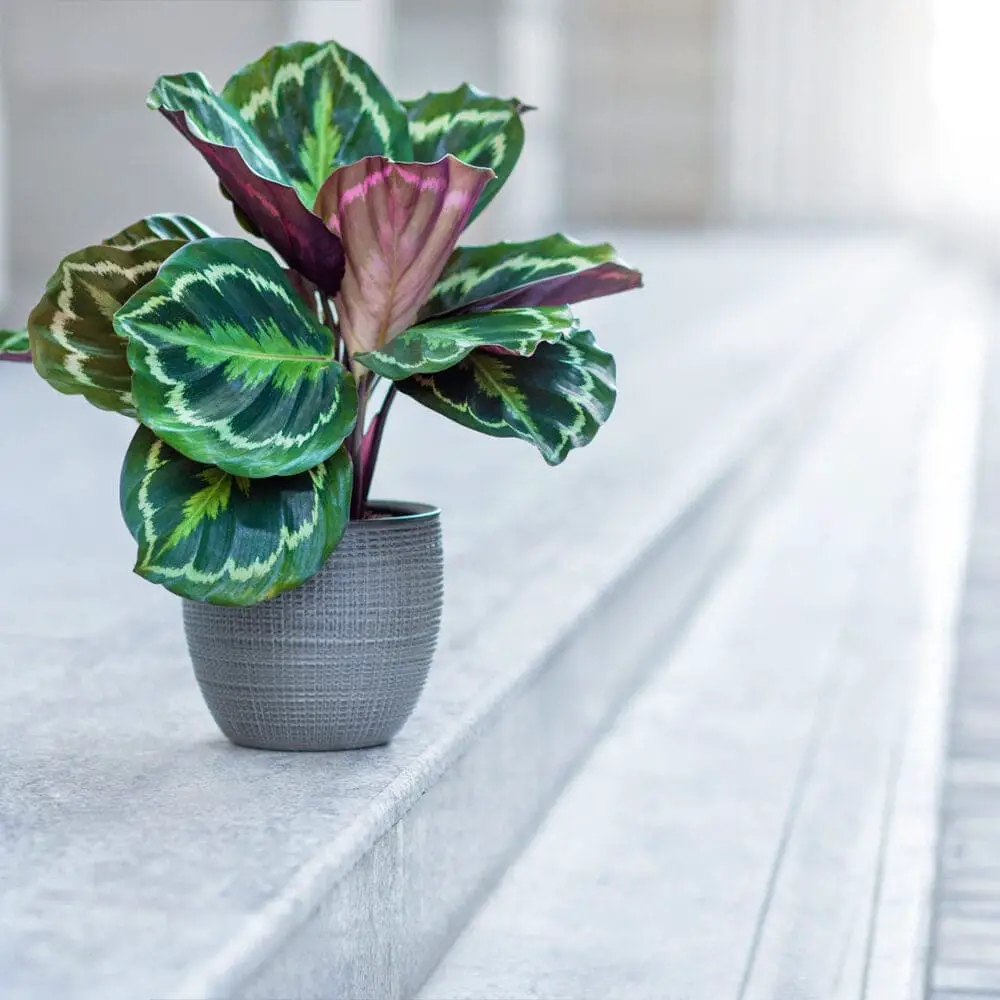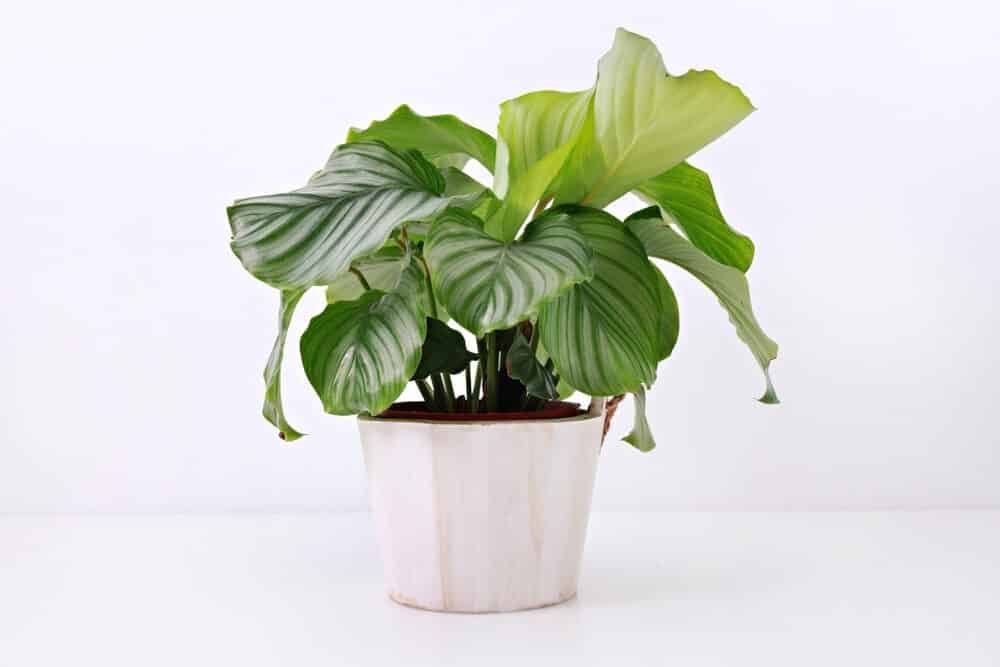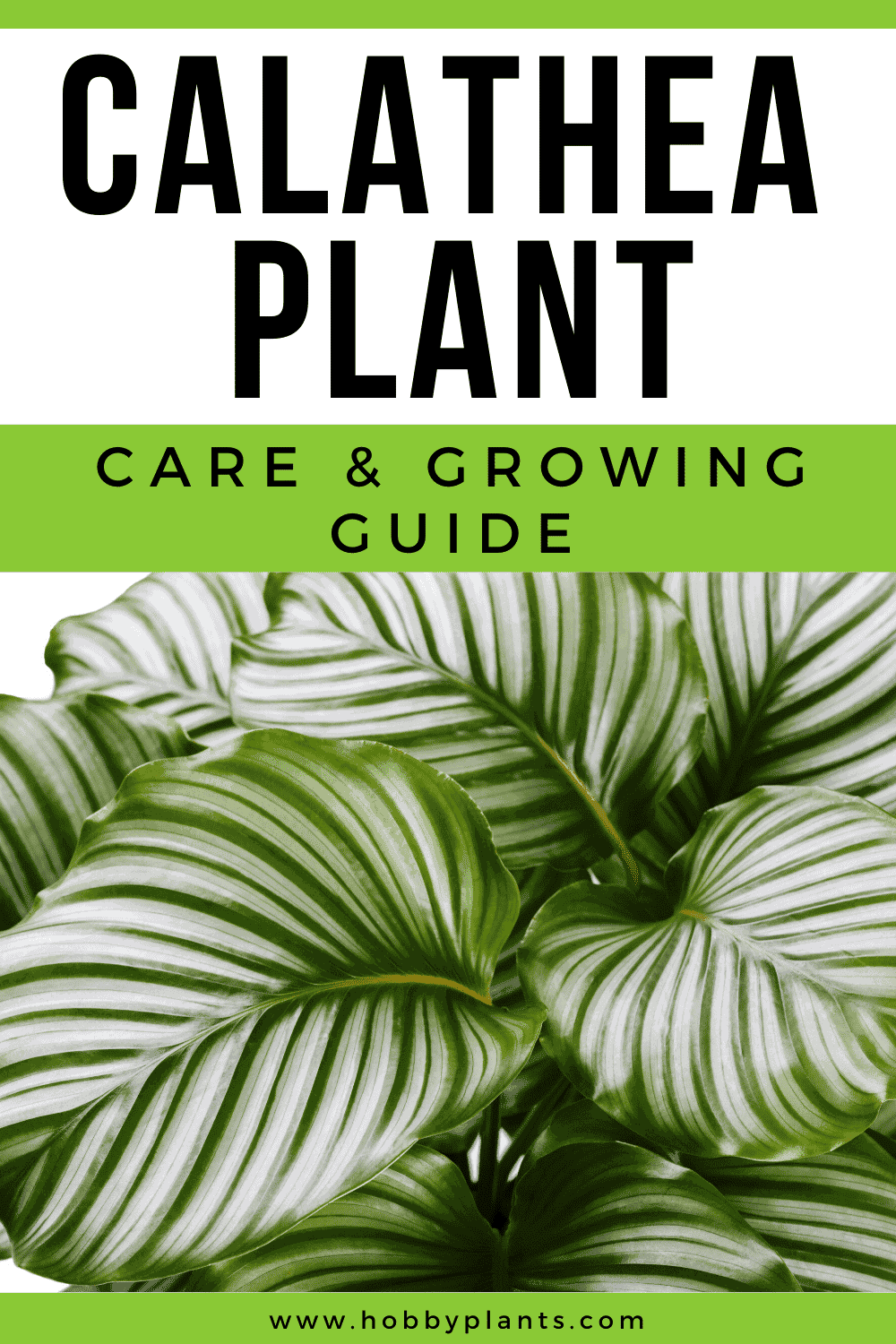Calathea plants are a variety of small plants that have unbelievable designs on their leaves.
Calatheas are very popular as houseplants for their unique leaves, and their ability to clean out toxins from the air. Another reason they’re so popular is that they are easy to maintain and doesn’t require a lot of indirect or direct light. They are good for offices, schools, and buildings. The origins of the calathea plant family are from Africa.
Calathea Plant Care & Growing Guide
1. Light Requirement
As said before, calathea plants can live for long periods of time in low amounts of light. Low amounts of lights are okay for it because this small plant is usually found at the bottom of the jungle.
However, it does best when it is surrounded by bright but indirect light. However, do not put this plant or any calathea type plants in full sunlight. The sun’s rays will dull the color of its leaves. The sun could also burn and brown the leaves too.
2. Water
When watering a calathea, the waterer needs to know that these types of plants are sensitive to what is in the water supply. Because of its sensitivity, it will need to be watered with distilled water or purified water.
Calathea plants like to have moist soil and do not like it when the soil dries out. When you go to water the calathea, make sure it is not overwatered.
3. Climate and temperature
Keep cold weather and Frost and cold drops away from calathea type plants. These plants are from tropical and subtropical areas, and their preferred temperature range is 65 to 80 degrees. If the temperature goes past this range for too long, the leaves of calatheas will begin to curl.
Because of where they originated from, calathea types plants love to be in humid weather. The reason is that they absorb moisture through their leaves, unlike other plants that absorb moisture through their roots. If the home of a calathea is not humid, place it next to a humidifier so it can be humid.

4. Soil
When placing a calathea type in a pot of soil, it can do well in a basic potting soil mix.
If the soil needs to be revived and given nutrients, then a fertilizer will come in handy. When fertilizing the soil, use only liquid fertilizers and only use them during the growing season. Do not use fertilizer in the winter. Calathea plants must be fertilized at least once a month.
5. Repotting
The day before you repot a calathea, water it the point where it is soaked. Choose a container that is wanted to in bigger than its current container. Make sure the new soil has very good drainage perlite, peat, coir, or sand to improve drainage if using typical potting soil.
Gently extract the plant from its pot and shake off excess soil. Now is the time to turn off dead or damaged roots. Place the plant in its container and then gently fill it up with soil. Bury it until the rootball is completely covered, so up to its stem. After that is all done, water with thoroughly.
6. Speed of Growth
Most calathea plants grow very slowly. They usually reach maturity in a few years, and in those few years, they only grow up to 2 ft tall. They will stop growing by themselves. One reason that Calatheas grow so slowly is that they spend most of their life under no light.
If a calathea type plant were to spend its life in direct sunlight, it might grow a little faster, but its overall growth rate is still slow.
7. Height and Spread
Generally, calathea type plants do not grow very tall. They are slow growers and usually only grow up to two feet. After they reach this height, even if they are mature plants, the calatheas will stop growing on their own. Their width is usually around a foot.
8. Trimming
First, always trim off dead plant material and dead bloom. Also, trim off any excessively large leaves or stems that might be taking up too much energy and nutrients.
Then trim off any old yellowing leaves or leaves with brown tip syringes.
Because of this plant’s slow-growing rate, do not trim it unless you have a real reason. Or it could take even longer to grow.

Is the Calathea plant poisonous?
No, calathea type plants tend to not be toxic to other humans or animals. They can also be handled without gloves. It does not mean that they’re edible.
Can Calathea Grow in Water?
No, calathea type plants cannot grow in water. They are easily waterlogged and can suffer from excessive moisture.
Learn more: Mandevilla Plant Care & Growing Guide
Do Calatheas have flowers, and how do I get them to bloom?
Depending on the species of plant that you have, Calathea type plants do have flowers. They range from bright red flowers to white flowers to small tiny flowers.
In order to improve the chance of Calathea flowers blooming, keep the plant in bright indirect light. Make sure the soil around it is damp but never moist and do not overwater it. Apply enough fertilizer, so it receives enough nutrition. And keep it at a good temperature between 60 and 70 degrees.
Common Calathea Pests and diseases
- Scale bugs are ugly brownish-yellow bugs that attack plants by sucking their sap and nutrients from the stem. If there is an infestation of them, the plant can quickly die. To get rid of them, you can hose them off of a large plant or rinse them off of the sink. Then you must apply an insecticide and watch for their larvae to hatch to get rid of them too.
- Spider mites are tiny red spiders that also kill plants by sucking at their nutrients in sap. Just like the scale bug, wash the entire plant off in water and apply an insecticide, like neem oil.
Similar post:
- Flaming Katy (Kalanchoe Blossfeldiana) Care & Growing Guide
- Philodendron Selloum Care & Growing Guide
Conclusion
- Calathea type plants don’t grow very tall and have a slow growth rate.
- To make their flowers bloom, they must have excellent lighting and be fertilized at least once a season.
- They are not poisonous to cats, dogs, or humans.
- The soil for this plant must drain well and quickly. Stagnant water brings problems.
- This genus of plant loves humid weather and should be placed near a humidifier is the environment is not humid enough.

Victoria is the owner and main author of hobby plants. She loves spending her free time in her garden planting and taking care of her plants. Victoria hopes you enjoy the content here!
![Mother Of Thousands Plant [Complete Plant Care Guide] Mother Of Thousands Plant [Complete Plant Care Guide]](https://www.hobbyplants.com/wp-content/uploads/2022/07/mother-of-thousands-plant-300x158.jpg)
![Majesty Palm Plant Care: [Complete Beginner's Guide] Majesty Palm Plant Care: [Complete Beginner's Guide]](https://www.hobbyplants.com/wp-content/uploads/2022/08/majesty-palm-care-300x158.jpg)
![Exotic Angel Plant Care: [Complete Beginner's Guide] Exotic Angel Plant Care: [Complete Beginner's Guide]](https://www.hobbyplants.com/wp-content/uploads/2022/08/exotic-angel-plant-care-300x158.jpg)
![Snow White Waffle Plant: [Complete Care Guide] Snow White Waffle Plant: [Complete Care Guide]](https://www.hobbyplants.com/wp-content/uploads/2022/08/snow-white-waffle-plant-300x158.jpg)
![Waffle Plant Care: [Complete Beginner's Guide] Waffle Plant Care: [Complete Beginner's Guide]](https://www.hobbyplants.com/wp-content/uploads/2022/08/waffle-plant-300x158.jpg)
![Bird Of Paradise Plant Care: [Complete Beginner's Guide] Bird Of Paradise Plant Care: [Complete Beginner's Guide]](https://www.hobbyplants.com/wp-content/uploads/2022/08/bird-of-paradise-plant-300x158.jpg)
![Purple Passion Plant Care: [Complete Beginner's Guide] Purple Passion Plant Care: [Complete Beginner's Guide]](https://www.hobbyplants.com/wp-content/uploads/2022/08/purple-passion-plant-care-300x158.jpg)
![China Doll Plant Care: [Complete Beginner's Guide] China Doll Plant Care: [Complete Beginner's Guide]](https://www.hobbyplants.com/wp-content/uploads/2022/09/china-doll-plant-care-300x158.jpg)
![Polka Dot Plant Care: [Complete Beginner's Guide] Polka Dot Plant Care: [Complete Beginner's Guide]](https://www.hobbyplants.com/wp-content/uploads/2022/09/polka-dot-plant-300x158.jpg)
![Mona Lisa Lipstick Plant Care: [Complete Beginner's Guide] Mona Lisa Lipstick Plant Care: [Complete Beginner's Guide]](https://www.hobbyplants.com/wp-content/uploads/2022/09/lipstick-plant-mona-lisa-300x158.jpg)
![Yucca Cane Plant Care: [Complete Beginner's Guide] Yucca Cane Plant Care: [Complete Beginner's Guide]](https://www.hobbyplants.com/wp-content/uploads/2022/09/yucca-cane-plant-care-300x158.jpg)
![Bush On Fire Croton Plant Care: [Complete Beginner's Guide] Bush On Fire Croton Plant Care: [Complete Beginner's Guide]](https://www.hobbyplants.com/wp-content/uploads/2022/09/bush-on-fire-croton-300x158.jpg)